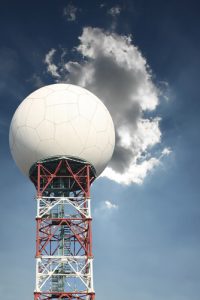
The House unanimously approved legislation on Tuesday championed by U.S. Rep. Frank Lucas (R-OK) that would prioritize weather research to improve forecasting and warnings of impending severe storms, while also tapping into private sector weather solutions.
The Weather Research and Forecasting Innovation Act, H.R. 353, would make improving weather data, modeling, computing and forecasting priorities of the National Oceanic and Atmospheric Administration (NOAA). The measure would also extend warning lead times and specifically improve forecasting of tornadoes and hurricanes that could potentially save lives.
“When a major storm or tornado is quickly approaching your community, every additional minute of preparation time counts,” Lucas, the vice chairman of the House Science, Space and Technology Committee, said. “This legislation strengthens our country’s commitment to severe weather forecasting and ensures NOAA has access to the best weather data.”
The measure now heads to President Donald Trump for signature.
Lucas praised the inclusion of a dedicated Tornado Warning Improvement Program that will help develop detection and notification systems.
H.R. 353 would also call for the development of a plan to leverage observing system simulation experiments and technology to help regain U.S. superiority in weather modeling and forecasts.
The bill provides for technology transfers between the National Weather Service and private sector weather companies and universities to improve forecasting. And NOAA may contract with the private sector to obtain data for weather forecasting.
U.S. Rep. Lamar Smith (R-TX), the chairman of the committee, said the measure marked a major step in transforming the nation’s weather forecasting capabilities.
“The Weather Research and Forecasting Innovation Act will enable new weather research, models and technologies to better protect lives and property,” Smith said. “With this bipartisan effort, we will improve forecasting by looking to the private sector for new technologies and weather solutions. This bill gives NOAA a clear vision and allows them the flexibility to buy new, affordable and potentially better sources of data. With more and better options, we can finally make needed improvements to our weather forecasting capabilities.”
H.R. 353 also includes a provision led by U.S. Sens. Richard Burr (R-NC) and Thom Tillis (R-NC) to improve inadequate weather radar in the Charlotte, North Carolina, area.
“This is a step in the right direction,” Burr said. “When it comes to dangerous tornadoes, accurate weather forecasting is critical to ensuring the safety of citizens. I’m glad my colleagues recognize the importance of providing the tools that cities like Charlotte need to prepare for potential disasters.”
Currently, the Charlotte area is served by a NWS Doppler radar that is located 58 miles away in Greer, South Carolina.
“I want to thank my Senate colleagues for passing this legislation that is important to the safety of citizens in the Charlotte metropolitan region and across the country who live without quality radar coverage,” Tillis said last week. “We must give all Americans more accurate warning when severe weather is approaching …,” he added.



